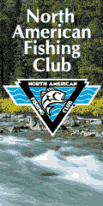 |
|


Free 90 day Risk free trial offer click here
|
Tackling the Southern Reservoirs for Walleye
Fishing for walleyes used to be considered a passion only for anglers in the northern part of the country. With both of the professional tournament trails setting up competitive events on southern reservoirs recently, maybe some of the bass anglers in the lower part of the U.S. will realize there is a viable walleye fishery there. While fishing in the southern reservoirs we pros discovered that a walleyes personality remains unchanged whether it's a Canadian walleye or a Kentucky walleye. The difference the intricacies of the body of water your fishing. I'll explain. In a lake like Mille Lacs in Minnesota we key on sand shorelines, rock and rubble piles and large mud flats out in the center of the lake. In reservoirs like Lake Oahe in South dakota the emphasis is on rock piles and points. In Cumberland reservoir in Kentucky the walleyes hold on shale points and shale piles. Each situation can require a different technique based on the makeup of the structure. Let's say I'm fishing the sand on Mille Lacs. I can drag a heavy live bait sinker. On the rocks in Oahe I can tick bottom with a bottom bouncing weight. In Cumberland anything you put on the bottom near that sharp shale is either snagged or cut. Bottom bouncers work great around the shale, but you have to be careful. Crank baits bounced on the bottom rubble of a northern walleye lake work great, but would end up lost forever around the shale piles in this southern reservoir. Of course there are some fairly typical walleye spots on lakes like Kentucky lake where the sauger station. A live bait rig works well. But the question becomes; do you target those southern walleyes any differently than there northern counterparts? The answer is yes. Southern walleyes don't seem to get pressured much, but that doesn't make them any more aggressive. As a matter of fact those southern walleyes and saugers seem to be as conditioned , or less aggressive than many of the walleyes in the high-pressured lakes of the north country. This means your approach must be tailored to fit a walleye that is neutral, leaning towards negative in nature. Your approach also must be designed to target walleyes that appear to be nomadic. One minute your on a group of fish and you catch two or three, the next minute they're gone and you're searching again. you also need to consider the makeup of the bottom you're fishing. I'm going to give you an example of my game plan for a situation like
Cumberland I want to make sure I'm no surprised by a sharply rising bottom
or a shale lip that will cause snagging and lost lures, so before I even
drop any bait in the water I use my GPS to set up a plot line. I'm using
a The lure consists of a bottom bouncer with a You want to keep the bottom bouncer just ticking the bottom and keep one eye on the sonar. If you see some walleyes suspended a few feet up raise the rig so it travels through them. Keep the distance from the bottom bouncer and spinner short, about 14 to 18 inches. The reason for this is that you will be moving slowly, just fast enough to get the spinner spinning, and a longer distance between the bouncer and the bait will have the spinner dragging on the bottom, getting hung up and you'll be retying often. As usual you should be fishing fish. If I'm plotting a point or a drop-off
and I'm not seeing any fish on the sonar I just keep moving. Many
times you'll see a nice big school of fish on the screen, run the bait
through the school, and pick up largemouth or smallmouth bass, crappies,
bluegills, or even an occasional striper or catfish. When this happens
you have two choices. Have some fun with that group of fish, or keep
moving untill you find a school of walleyes. They're there. We know that
now, and we know those walleyes can be caught.
Please visit these site sponsors |
|---|---|